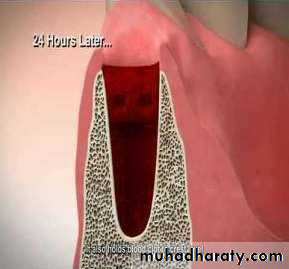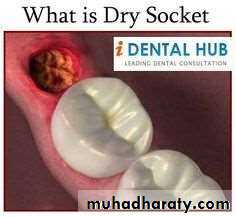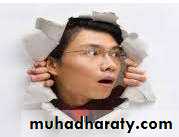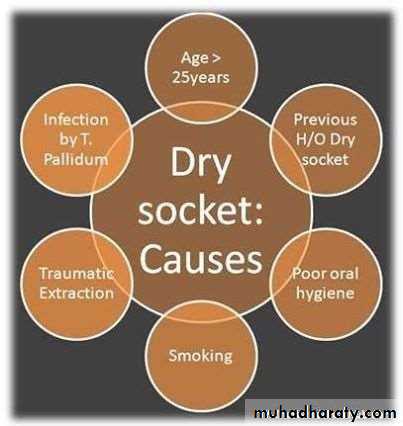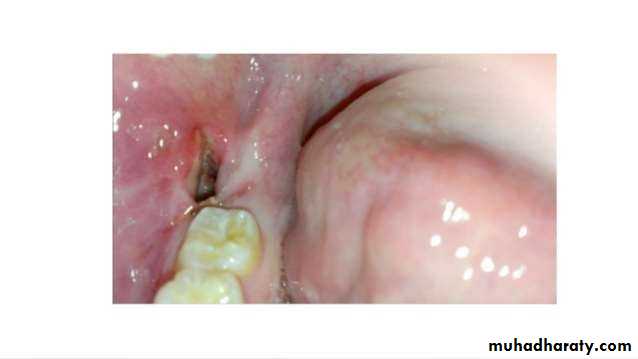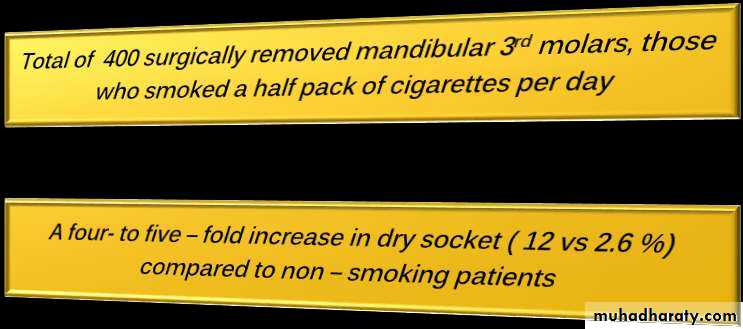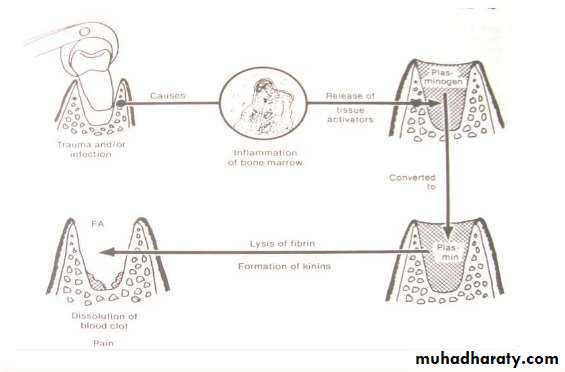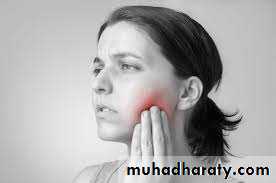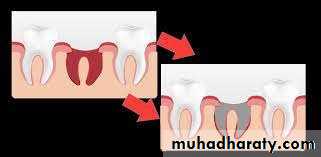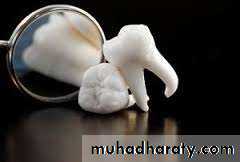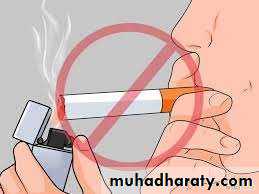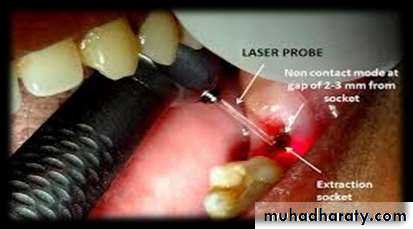Dry socket 4th year
Dry socketDr asmaa
• Abstract
• Introduction• Definition
• Signs & symptoms
• Incidence
• Onset and durarion
• Etiology
• Pathogenesis
• Prophylactic management
• Symptomatic management
• Discussion
• “DRY SOCKET” is one of the most common complication that occurs after extraction of tooth. The main objective of this paper is to -
• Harmonize descriptive definitions.
• Discuss the etiology and pathogenesis of dry socket.
• The need for identification and elimination of risk factors.
• The preventive and symptomatic management of the condition.
• Alveolar ostitis(AO)
• Localized osteitis• Postoperative alveolitis
• Alveolalgia
• Alveolitis sicca dolorosa
• Septic socket
• Necrotic socket
• Localized osteomyelitis
• Fibrinolytic alveolitis
• One of the most common post operative complications following the extraction of permanent teeth is a condition known as “ DRY SOCKET”.
• This term has been used in the literature since 1896, when it was first described by
• “CRAWFORD”.
• “FIBRINOLYTIC ALVEOLITIS” is the most accurate of all the terms of dry socket, but is also the least used in the literature.
• In most cases, the more generic lay term “dry socket” tends to be used.
• A descriptive definition that could be used universally as a standardized definition for dry socket :
• post operative pain in and around the extraction site , which increases in
• Severity at any time between 1 and 3 days after the extraction
• Accompanied by a partially or totally disintegrated blood clot within
• the alveolar socket with or without halitosis.
• The denuded alveolar bare bone may be painful and tender.
• Some patients may also complain of ‘intense• continuous pain’ irradiating to the ipsilateral ear
• ,temporal region or the eye.
• Regional lymphadenopathy (occasionally)
• Unpleasant taste (occasionally)
• Trismus is a rare occurrence in mandibular third molar extractions
• probably due to lengthy and traumatic surgery.
• 3-4% following routine dental extractions
• 1% to 45% after the removal of mandibular third molars.• 25-30% after the removal of impacted
• mandibular third molars.• Occurs 10 times more frequently following the removal of 3rd molars than from all other locations.
• Mostly 1-3 days after tooth extraction.
• Within a week in 95 %and 100% of all cases of dry socket.• The duration of dry socket varies to some degree, depending on the severity of the disease, but it usually ranges from 5-1o days.
• Multifactorial origin
• the wound• Excessive irrigation or curettage of
• the alveolus after extraction.
• Oral micro-organisms
• Difficulty & trauma during surgery
• Roots or bone fragments remaining in
• 4.
• Physical dislodgement of the clot
• Local blood perfusion & anesthesia
• Oral contraceptives
• Smoking
• Increased frequency of dry socket in patients with
• 1, Poor oral hygiene• 2, Pre-existing local infection such as pericoronitis and advanced periodontal disease
• Reduced incidence of dry socket in conjunction with anti bacterial measures.
• Presence of large number of bacilli & Vincent’s spirochete was introduced by SCHROFF & BARTEL in 1929.
• Surgical extraction that involve the reflection of a flap and sectioning of the tooth with some degree of bone removal
• Less experienced surgeons
• Excessive trauma results in delayed wound healing-
• 1, Compression of bone lining the socket 2, Thrombosis of the underlying vessels
• 3, Trauma with a reduction in tissue resistance and consequent wound.
• Logical that fragments and debris remnants could lead to disturbed wound healing.
• Energetic repeated irrigation of the alveolus might interfere with clot formation and give rise to infection.
• Violent curettage might injure the alveolar bone
• The vasoconstrictors in local anesthetic solutions have been suggested as alternative factors in the pathogenesis of dry socket.
• Patients who requires repeated injections of local anesthetic solutions may have a reduced pain threshold, which may account for complaints of pain originating from the extraction socket.
• Increase in incidence of dry socket when periodontal intraligamental injections were used rather than block or infiltration injections.
• It has been proposed that “estrogen” like pyrogens present in the contraceptive pills will ACTIVATE THE FIBRINOLYTIC SYSTEM INDIRECTLY.
• CATERANI et all : the propability of dry socket increases with increased estrogen dose in the oral contraceptives and that fibrinolytic activity appears to be lowest on days 23 through 28 of the menstrual cycle.
• Incidence of dry socket is > 40 % among patients who smoked on the day of surgery or on the first post operative day.
• Partial or complete lysis and destruction of the blood clot was caused by tissue kinases liberated during inflammation by a direct or indirect activation of plasminogen in the blood.
• Presence and formation of ‘kinin’ locally in the socket .
• Kinins activates the primary afferent nerves, which may have already been presensitized by other inflammatory mediators and algogenic substances ( even in concentrations as low as 1 ng/ml)• Infection
• Size of wound• Blood supply
• Resting of part
• Foreign bodies
• General condition of the patient
• With references in the literature correlating to the prevention of dry socket can be divided into
• Non- pharmacological and
• Pharmacological preventive measures.
• Use of good quality current preoperative radiographs.
• Careful planning of surgery.• Use of good surgical principles.
• Extractions should be performed with minimum amount of trauma and maximum amount of care.
• Confirm presence of blood clot subsequent to extraction.
• Preoperative oral hygiene measures.
• Encourage the patient to stop/limit smoking in• immediate postoperative period.
• Avoid vigorous mouth rinsing for the first 24 hours of post extraction
• For patients taking oral contraceptives extractions should ideally be performed during days 23 through 28 of menstrual cycle.
• Comprehensive pre and post operative verbal instructions should be given.
• Anti- bacterial agents
• Anti- septic agents and lavages• Anti- fibrinolytic agents
• Steroidal anti- inflammatory agents
• Obtundent dressings
• Clot supporting agents
• Prophylactic antibacterials, either given systemically or used locally.
• Systemic anti bacterials – penicillin• clindamycin erythromycin metronidazole
• Preoperative administration of antibacterial agents is more effective.
• A significantly reduced incidence of dry socket following light socket irrigation with Betadine & topical application of Clindamycin in Gelfoam.
• Chlorhaxidine (CHX) is a bisdiguanide antiseptic with anti microbial properties.
• USE OF WHITEHEAD’S VARNISH:• Whitehead’s varnish is a combination of ‘iodoform, balsam
• tolutan, styrax liquid I a base liquid.
• RESULT: Significant decrease in incidence of postoperative pain.
• Haemorrhage and swelling.
• Has been widely used in the management of dry socket and is frequently mentioned in the literature.
• It contains:
• butamben(anesthetic) eugenol(analgesic) iodophorm(antimicrobial)
• Topical use of ‘para-hydroxybenzoic acid(PHBA) in extraction wounds as Anti-fibrinolytic agents.
• Apernyl- an alveolar cone with formulation of
• 32 mg acetylsalicylic acid 3mg propyl ester of PHBA 20 mg unknown tablet mass
• Topical use of corticosteroids in the prevention of dry socket – decreases immediate post – operative complications failed to reduce the occurrence of dry socket
• Immediate placement of eugenol containing dressing into the extraction socket is beneficial in the prevention of post extraction complication.
• Use of clot supporting agents such as ‘polylactic acid(PLA)’ was widely promoted as ultimate solution for preventing dry socket.
• Remove any suture to allow adequate exposure of extraction site.
• Irrigate the socket with isotonic saline gently,careful suctioning of all excess irrigation.• Do not attempt to curette the socket.
• Prescription of potent oral analgesics.
• Patient is given with a ‘plastic syringe with curved tip for home irrigation’ with chlorhexidine solution.
• Under block anesthesia
• Sharp margins were trimmed, rounded• Any foreign bodies present were thoroughly removed
• Detached gingival margins are also scraped.
• Desired medications as well as precautions
• Patients was not only without pain but was also comfortable both physically as well as psychologically from the very next day.
• Evidence suggests that it is most particularly related to a complex interaction between excessive localized trauma , bacterial invasion and their association to plasmin and subsequently , the fibrinolytic system.
• AT FIRST DO NO HARM
• - Hippocrates
• Prevention of dry socket entails reducing the number of possible risk factors, meticulous attention to procedural details and surgical skills.



























